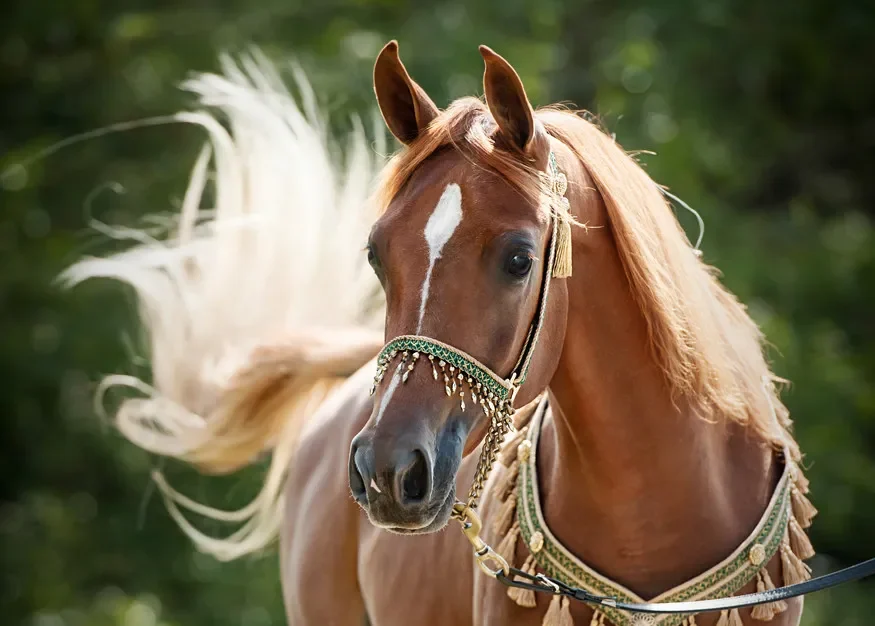Horses are sensitive animals with a rich body language that allows them to communicate clearly without speaking. Understanding these signals helps the rider or handler build trust, improve safety, and create a harmonious relationship with the horse.
1. The Eyes: A Window Into the Horse’s Emotions
Soft, relaxed eyes
- Show comfort, trust, and calmness.
- Eyelids are relaxed, and very little white of the eye is visible.
Wide or dilated eyes
- Indicate fear, tension, or surprise.
- Often appears moments before a horse tries to flee.
Visible white of the eye (sclera)
- A sign of anxiety, stress, or anger.
- The horse may need distance from the source of discomfort.
2. Ear Positions and What They Mean
Ears pointed forward
- Curiosity, attention, and interest in something ahead.
Ears pinned back
- A warning sign of irritation or aggression.
- Flattened ears usually come before biting or kicking.
Constant ear movement
- The horse is gathering information from its surroundings.
- Can indicate alertness or nervousness.
One ear forward, one ear back
- Split attention or uncertainty.
- The horse is watching two directions at once.
3. The Tail: A Clear Indicator of Mood
Raised tail
- Excitement, energy, or playfulness.
- Common in young or spirited horses.
Tail swishing strongly
- Irritation, often due to insects or discomfort.
- Can also indicate frustration.
Relaxed, low tail
- Calmness and relaxation.
Tail clamped tightly
- Fear or high tension.
- The horse may be preparing to run.
4. Body Posture and Movement
Head held high
- Alertness, fear, or surprise.
- If it continues, the horse might bolt.
Lowered head
- Calm, relaxed, and willing to interact.
Pawing the ground
- Boredom, impatience, or mild frustration.
- If combined with sweating or rolling, it may indicate pain.
Backing away
- Anxiety or refusal to approach something unfamiliar.
Rolling on the ground
- Often normal and relaxing behavior.
- Repeated rolling with discomfort may signal colic.
5. Sounds and Breathing
Snorting
- Evaluating a new situation.
- Indicates alertness or curiosity.
Short neigh
- A greeting or friendly call.
Loud, extended neigh
- Fear, separation anxiety, or calling to other horses.
6. How to Build a Shared Language With Your Horse
- Stay calm: Horses sense human emotions quickly.
- Observe constantly: Each horse has its own unique communication style.
- Approach gradually: Especially with shy or nervous horses.
- Use positive reinforcement: Encourage calm behavior.
- Avoid loud noises or sudden movements: These can feel threatening to a horse.
A horse’s body language is detailed and expressive. By learning to read their eyes, ears, tail, and posture, you can communicate with them more effectively, build trust, and create a stronger bond , no words needed.
If you want to experience horse riding, open the app, book your session, and enjoy the ride with us



